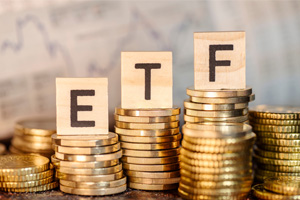As an investor, it is important to diversify your portfolio across asset classes such as equities, fixed income, real estate and commodities. While it is easy to invest in equity via mutual funds such as equity fund and hybrid funds, and allocate a part of your corpus to debt funds, through the SIP and lump sum routes, have you heard of the Bharat bond ETF? The Bharat ETF was launched by the government of India, with the intention of bolstering India’s underdeveloped bond market and offering investors a new avenue for parking their corpus. Accordingly, Bharat bond exchange traded funds invest in the corporate bonds issued by domestic public sector undertakings such as Power Finance Corporation, Rural Electrification Corp, Indian Railways Finance Corp, etc. Here is everything you need to know about Bharat bond, Bharat bond ETF returns, and the Bharat bond fund.
What are Bharat Bond ETFs?
Bharat bond ETF encompasses a portfolio of bonds issued by various public sector entities such as NABARD, Indian Oil Corporation, Power Finance Corporation, and more. These bonds have a minimum investment requirement of INR 1000, enabling even small retail investors to participate in this initiative. The underlying bonds within these ETFs have fixed maturity dates and since its establishment in 2019, these bond ETFs are available in two series: three years and 10 years. Each series tracks a specific index developed by the National Stock Exchange of India.
How does Bharat Bond ETF work?
The Bharat bond ETF is a passive debt exchange-traded fund which tracks a pre-decided debt benchmark and maintains its bond holdings till maturity, similar to a target maturity fund. Currently, these ETFs track the Nifty Bharat Bond index and enable investors to participate in the growth of the debt market while offering them a chance to earn returns in line with the market. Unlike active debt funds, which attempt to beat the market and generate an alpha, these ETFs do not witness active management – rather, they track the ebb and flow of the underlying debt market. Many PSUs in India choose to issue bonds under the Bharat bond category, as it enables them to mop up significant capital for their requirements, while also helping expand the larger debt market in the country. At present, the Nifty Bharat Bond Index April 2032 consists of the AAA-rated bonds issued by IRFC, PFC, Power Grid Corp of India, NTPC, National Bank for Agriculture and Rural Development, Export-Import Bank of India, National Hydro Power Corp, and Nuclear Power Corp of India. The ETF will only alter its holdings if the PSU undergoes privatisation or loses its AAA status.1
[1] https://www.wintwealth.com/blog/bharat-bond-etf-meaning-benefits-risks-taxation/
How to invest in Bharat Bond ETFs?
To invest in Bharat bond ETFs, start by determining your preferred investment horizon—short term (3-5 years) or long term (10 years). Next, visit the official portal or a branch office of the registered fund house offering these ETFs. Complete the necessary registration and KYC formalities, and submit the required documents to open your Demat account. Then, link your bank account with the Demat account and transfer the funds needed for your investment. Once you have successfully completed these steps, you can easily buy and sell units of Bharat bond ETFs, making the investment process straightforward and accessible.
What are the benefits of investing in Bharat Bond ETFs?
There are many benefits to investing in these ETFs, beginning with the fact that these funds are extremely stable, given the AAA and PSU status of the constituent bonds. Further, since you already know the coupon rate on these bonds, you can ascertain the realistic rates that you will garner, at the end of the investment cycle. These benefits make the Bharat bond ETF an excellent option for risk-averse investors. Further, these ETFs act as a cost-effective and safe means of investing in the growth of domestic PSUs, while also ensuring optimal liquidity due to their safe and government-backed nature. As an initiative from the Government, these ETFs undergo stringent scrutiny from regulatory bodies, thus ensuring that your money is parked in a transparent and secure vehicle. Additionally, Bharat bond ETFs are also very tax-efficient in nature, making it a great addition to your portfolio.
What are the risks of Bharat Bond ETF?
Investing in Bharat bond ETFs entails specific risks that should be considered. As indicated by even the safest and most attractive asset classes in the market, there is an extremely small amount of credit and liquidity risk, when you invest in these ETFs. In terms of the liquidity risk, the presence of buyers or sellers is necessary to execute transactions, and a lack of them when you wish to exit could lead to distressed sales and potential losses. These ETFs also entail some amount of interest rate risk, as bond prices are influenced by interest rates. An increase in rates can lead to lower bond prices and reduced returns, while falling rates have the opposite effect. Finally, exiting prematurely may expose you to fluctuations in bond interest rates, impacting your investment.
Taxation of Bharat Bond ETFs
At the time of redemption, the gains from your Bharat bond ETF holdings will be added to your total income and then taxed as per the applicable slabs.
Given the ongoing high interest rate regime, this is an excellent time to invest in Bharat bond ETFs and augment your debt allocation. So, start investing right away.
An investor education initiative by Edelweiss Mutual Fund
All Mutual Fund Investors have to go through a one-time KYC process. Investors should deal only with Registered Mutual Fund (RMF). For more info on KYC, RMF and procedure to lodge/redress any complaints, visit - https://www.edelweissmf.com/kyc-norms
MUTUAL FUND INVESTMENTS ARE SUBJECT TO MARKET RISKS. READ ALL SCHEME-RELATED DOCUMENTS CAREFULLY
Trending Articles
MUTUAL FUND INVESTMENTS ARE SUBJECT TO MARKET RISKS, READ ALL SCHEME RELATED DOCUMENTS CAREFULLY.




















